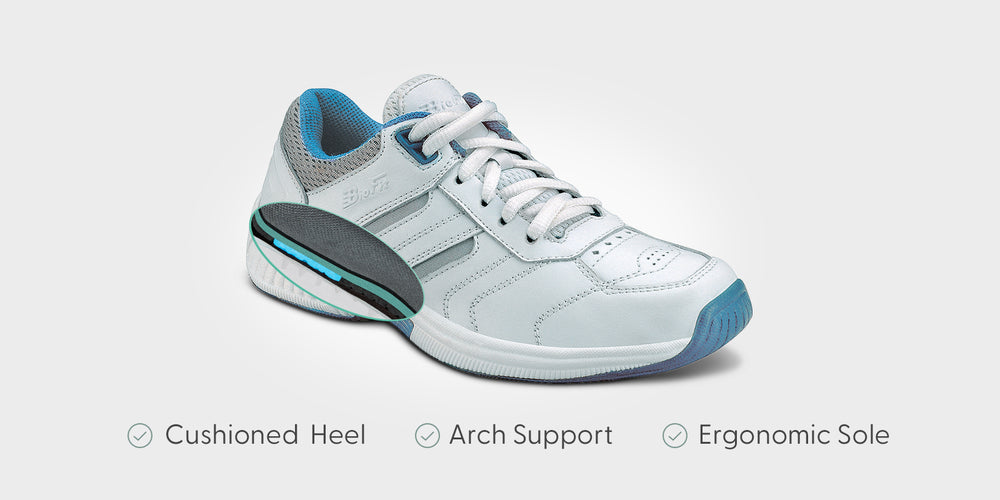Superior Comfort and Relief for Sensitive Joints
Orthofeet’s arthritis shoes are designed to provide gentle support, cushioning, and relief for individuals with arthritis. Crafted to reduce pressure on joints and alleviate discomfort, these shoes incorporate advanced orthopedic features to improve mobility, enhance stability, and keep you comfortable all day. Ideal for everyday wear, Orthofeet arthritis shoes for women and men help you stay active while managing the unique challenges of arthritis.
Why Choose Orthofeet Arthritis Shoes?
Orthofeet arthritis shoes are engineered with a focus on minimizing joint strain and maximizing comfort. With soft, stretchable materials, premium orthotic insoles, and cushioned soles, these shoes create a soothing environment for sensitive feet and joints, providing relief and stability with every step.
Key Features:
- Orthotic Insoles with Arch and Heel Support: Each pair includes orthotic insoles that offer robust arch support and heel stability, helping to reduce joint strain and alleviate pain associated with arthritis.
- Shock-Absorbing, Cushioned Soles: The lightweight, shock-absorbing soles absorb impact, easing pressure on your feet, knees, and lower back, making these shoes ideal for those who need comfort and stability throughout the day.
- Soft, Stretchable Uppers: Orthofeet shoes are crafted from stretchable materials that adapt to the contours of your feet, accommodating swelling and preventing pressure on sensitive areas.
- Wide Toe Box and Extra Depth: With a roomy fit, Orthofeet arthritis shoes allow toes to spread naturally, reducing pressure on bunions, hammertoes, and other sensitive joints.
- Seam-Free, Padded Interiors: The seamless, padded linings prevent irritation and friction, making these shoes perfect for individuals with sensitive feet or conditions like diabetes, neuropathy, and arthritis, or those seeking APMA-approved shoes for added assurance in foot health.
Benefits of Orthofeet Arthritis Shoes:
- Pain Relief for Joints and Feet: Orthofeet shoes are designed to alleviate discomfort by reducing pressure on painful joints and sensitive areas, offering soothing support for arthritis.
- Enhanced Stability and Balance: With reinforced arch support and ergonomic design, these shoes improve balance and reduce the risk of falls, making walking safer and more comfortable.
- All-Day Comfort and Support: Built to last, Orthofeet arthritis shoes provide long-lasting support, whether you’re at work, running errands, or relaxing at home.
Perfect for Daily Activities and Extended Wear
Orthofeet arthritis shoes are crafted to provide support in every setting, helping you stay comfortable and pain-free throughout the day:
- Ideal for Work and Errands: Comfortable and supportive, these shoes reduce joint strain, making them perfect for extended periods of standing or walking.
- Relaxing and Casual Wear: With a variety of styles, Orthofeet shoes are suitable for both active days and casual outings, offering relief and comfort whenever you need it.
Experience soothing comfort and relief with Orthofeet’s arthritis shoes. Discover how orthopedic support and a gentle fit can transform your daily comfort and mobility. For added support, pair your arthritis shoes with Orthofeet’s compression socks, designed to reduce swelling, improve circulation, and enhance comfort for individuals managing arthritis symptoms.
Shop the collection today and take a step toward pain-free movement!

